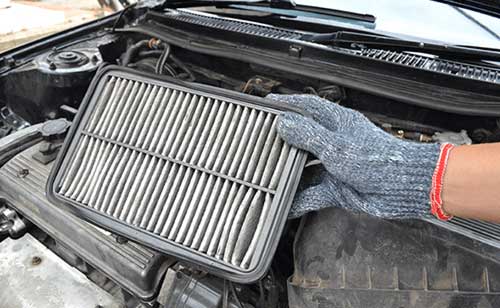Getting your car prepared for summer is important to ensure that it runs smoothly and efficiently during the warmer months. When summer approaches, use this 10-point checklist to make sure your car is ready to hit the road.
- Check the AC
A car’s air conditioning system requires regular maintenance to stay in peak condition. If it has not been turned on all winter, you should give it a trial run before it encounters hot temperatures.
Experiment with different temperature settings and different speeds to gauge the health of your AC. First, turn on the AC and ensure all fans blow at low, medium, and high speeds. If you have back seat vents, don’t forget to open them and check that air is blowing.
Next, check the temperature settings. Start with the coldest setting, then warm up the engine by driving. Does the air start cold, then turn warm? Does the air start and stay warm? Take notes of when your AC experiences problems, as these can help the mechanic diagnose the problem.
- Change the air filter
Most car manufacturers recommend changing the air filter every 12,000 miles since dust and debris accumulate and can clog the car’s cooling system. If you can see a substantial amount of dirt or dust or dust on your filter, ask the mechanic to replace it to help your AC run better in the summer.
- Eliminate strange smells
If you notice a bad smell when you turn your AC on, you might have mold or mildew in your cooling system. This can happen when water from the heating and cooling system accumulates and stands long enough to create a musty smell.
To remedy a musty smell, spray a disinfectant like Lysol liberally into both sides of the plenum, located at the base of your windshield by your wiper blades. This is where the air comes into the heating and cooling system. Afterward, leave your car windows open to help air the car out.
In addition to checking for smells, inspect your air conditioning system visually, particularly your refrigerant, which you can see in the sight glass under the hood. If your refrigerant looks milky instead of clear, you should change it, as this could mean another liquid has gotten in.
- Top up fluids
In addition to checking refrigerants, you’ll want to maintain the appropriate levels of all fluids in your car. These include brake fluid, engine oil, power steering fluid, and transmission fluid. Most manufacturers recommend a full fluid flush every three years or 30,000 miles, whichever comes first.
- Inspect brakes
You want your brakes in top condition, especially if you’re planning any summer road trips. If you feel a vibration or notice a grinding sound when you press the brakes, take the car in for a brake inspection. A mechanic will check the pads, rotors, drums, and shoes and inspect the vehicle for brake pad leaks.
- Check and rotate tires
If you put winter tires on your car, now is the time to swap them out for all-weather tires, which are more rigid and capable of handling hot asphalt. Temperature changes mean changes in tire pressure, so be sure to check and inflate according to recommendations for your make and model. Don’t forget the spare tire as well.
Rotate your tires to optimize fuel mileage and help your car perform at its best during warm summer months.
- Check the battery
Your battery works the hardest over winter, as cold temperatures slow the chemical reactions that fuel the battery. As the weather warms, battery fluids begin to evaporate, causing corrosion to accelerate. When fluid levels are too low, you will need to replace your battery. Preemptively replacing the battery can help you avoid being inconvenienced or even stranded during the heat of summer.
- Check the windshield wipers
If you live in an icy or snowy climate, your windshield wipers work hard in the winter. By the time summer rolls around, they might need replacement. Check that they are functioning properly and replace cracked or damaged blades. Top up the wiper fluid, as well.
- Check the radiator
Overheating engines cause more summertime breakdowns than any other issue. The heat of summer places cooling systems under intense pressure, which means hoses can crack. After checking hoses, look for any dirt blocking airflow to the radiator. To inspect your radiator cap for damage, let the engine cool, then look carefully for a damaged seal or gasket, as well as any corrosion or crust. If you spot damage, choose a replacement with the correct pressure for your cooling system. You can find this information on the old cap or in your owner’s manual.
- Clean and detail
Finally, give your car a good cleaning inside and out. Wash the exterior, vacuum the interior, and clean the windows. Apply wax to protect your paint from the summer sun. Fading and peeling paint is not just a cosmetic issue; eventually, paint damage can erode the car’s aluminum body.
Washing the outside of your car will help you spot potential problems that need attention and will have you ready to enjoy summer in comfort and style.
